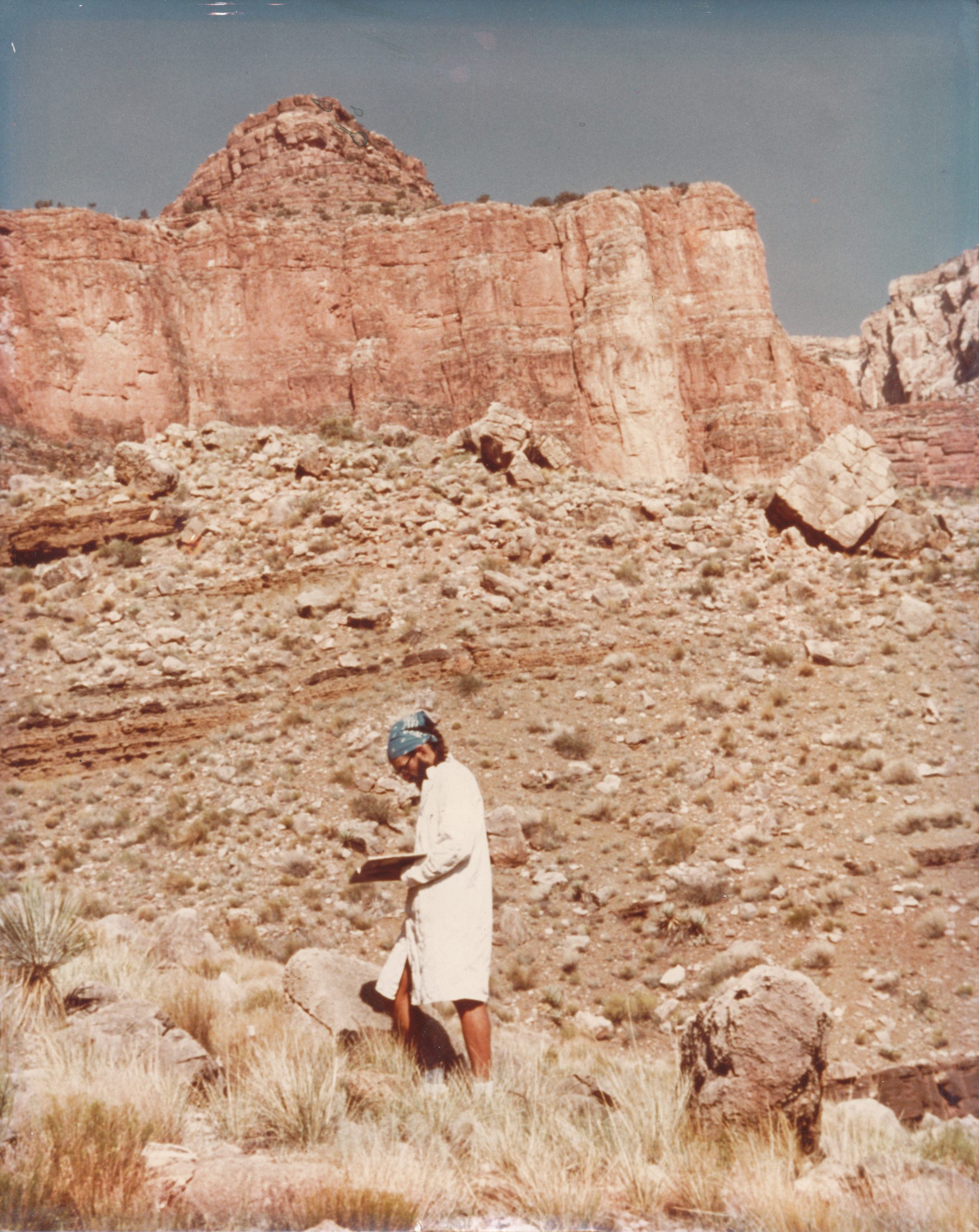Some information may be outdated.
Potholes abound on the Colorado Plateau — and not the ones associated with road work. Rather, natural potholes are depressions that occur primarily in sandstone. These depressions are unassociated with any drainage, yet house ephemeral pools of water. This week, we speak with biologist and ecologist Tim Graham about these fleeting environments and the organisms that have evolved to live in them.
Science Moab: So what’s happening inside potholes?
Graham: Potholes are small depressions in rock that form temporary aquatic environments. Many have dark biofilms, which are probably formed by a community of cryptobiotic algae and cyanobacteria.
Science Moab: How do these potholes support living organisms when they are prone to drying out?
Graham: Organisms living in those potholes have three main strategies to survive dry periods. Most insects and amphibians escape the pool when it starts to dry up. That creates some hazard, because the organisms have to reach adulthood before they’re capable of leaving the pool. If the pool dries out before a tadpole can metamorphose into an adult, the tadpole will die.
The next strategy is called the “tupperware” strategy. Organisms seal their surface from water loss and stay wet inside. It’s a good strategy for the short term, because as soon as water falls back into the pool, they can become active within seconds. But it’s really tough to be completely waterproof if you’re trying to remain alive. It works for a few months, maybe up to a year. If you’re dry longer than that, chances are that that strategy will fail and you’ll die.
The third strategy is the one I find most interesting and most bizarre. It’s often referred to as cryptobiosis. “Crypto” means hidden, and “biosis” means life. Organisms stay alive, but you can’t measure that they’re alive because the amounts of heat and gas released are so small. These organisms can lose up to 92% of the water in their cells and remain alive.
The organisms in the big puddles that use this are the eggs of crustaceans: fairy shrimp, tadpole shrimp, and clam shrimp. The egg makes a sugar called trehalose. There are parts of the trehalose sugar structure that mimic a water molecule. So as the egg dries out, trehalose molecules are plugged in where the water molecules would be. Then, when water comes back in, the water molecules replace the trehalose.
Science Moab: How else have pothole species evolved to survive in this limited habitat?
Graham: We all know the saying “don’t put all your eggs in one basket.” But the pothole critters are stuck in one basket. Mark Twain had a different perspective: “Put all your eggs in one basket and watch that basket,” he said. The way these critters “watch” their basket is by laying eggs with different kinds of hatching criteria. Crustaceans will produce eggs that hatch after one water filling, or after two or three. They’re in the same physical basket, but they’re in different response baskets.
Science Moab: How do humans impact these potholes by running over or in them?
Graham: Dry potholes get a physical crust on the surface. The crust is resistant to erosion by wind, so anything that breaks that crust is going to make sediment susceptible to being eroded out of the pothole, including organisms waiting for the next rain event.
In the wet potholes I’ve been studying in the Sand Flats area, I’ll be up there and the pools look like they’re doing fine. They’ve got tadpole shrimp and fairy shrimp and maybe some insects. I’ll come back a few days later, and there will be particular pools that are very cloudy. I found a pair of mountain bike gloves sitting next to a cloudy pothole. Chances are some mountain biker decided to take a dip.
These depressions can be quite small. But if you look around, there are a plethora of organisms in there. That’s an ecosystem, and if you walk on it, ride your bike on it, drive on it, then you will wear that system down and kill those organisms. So try to stay out of those potholes.
People who have studied alpine vegetation know the term “belly plant,” where the plant is so short that you have to lay your belly to study it. That’s why I like studying potholes: they’re belly ecosystems.
Science Moab is a nonprofit dedicated to engaging community members and visitors with the science happening in Southeast Utah and the Colorado Plateau. To learn more and listen to the rest of Tim Graham’s interview, visit www.sciencemoab.org/radio. This interview has been edited for length and clarity.
Appreciate the coverage? Help keep local news alive.
Chip in to support the Moab Sun News.





